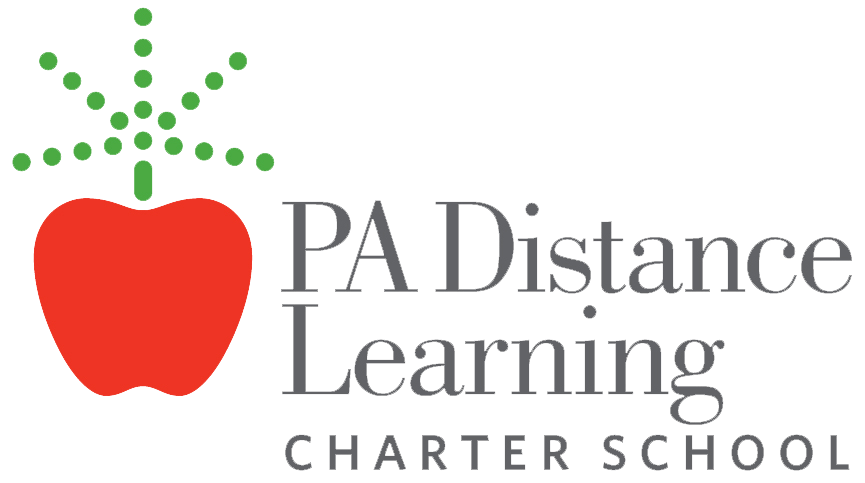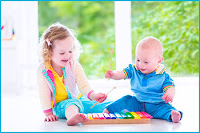How Do You Teach Music in a Cyber Setting?
By Elisa Carpenter, K-8 Music Education Teacher
- Do you even see the kids?
- I bet playing instruments is really difficult, right?
- Isn’t the value of music depreciated because it is not in person?
- How do they participate in games?
All of the above mentioned careers in music technology are important to our rapidly expanding use of technology as a classroom. The careers above are normally discussed with students once they reach high school. This is after they have had their general music education and time to experience music in many simpler ways. In a cyber setting, we can foster an interest in music, and technology at the same time, at the Kindergarten level, and the possibilities are endless!
So where do we start? We can’t possibly limit students in a cyber setting to experience music from 9th grade and up only…….and if we limit it to the career paths listed above, we completely leave out Music Therapy, Music Education, and most importantly…..Music Performance! The students in our cyber setting receive an all-inclusive elementary music education curriculum that allows them to explore music through singing, playing instruments, composing, notating, listening, analyzing and performing individually and in groups. This is the kind of education that traditional brick and mortar schools offer, so why should we be any different?
This brings us to the meat of the article….how?
It truly starts with the elementary students. The youngest of minds can be the most inspiring and imaginative, the most creative and comprehensive. Zoltan Kodaly, a famous musician and master in music education says the following about children:
"Let us take our children seriously! Everything else follows from this...only the best is good enough for a child." (1941)
Here is how, as an elementary music teacher, I make my musical experiences for my students engaging, achievable, but also fun!
- I have general goals for my students as musicians and people too!
- The curriculum has music that stands the test of time, and is developmentally appropriate.
- What we do is relevant to the music industry today, fun, and has goals that they can reach!
My utmost priority as a music teacher is to not create the next Wolfgang Amadeus Mozart or Michael Bublé…..although that would be pretty awesome……it is to have a classroom environment where my students can learn about music, and explore what their musical purpose is in life. I want to aid in the well-balanced social and artistic development of my students, and to offer the opportunity to become a musically literate adult. I want my students to be able to sing to their children when they go to bed, or sing Happy Birthday to celebrate another year. Music is about sharing the gift of expressing who we are, and how we are effected by the world around us. My students don’t have to be the next big thing, just a big thing in their own lives. I do this by implementing the following rules in my classroom:
- At all times, we are respectful of the level of musicianship of our friends, and choose to support their learning.
- We always have some class time to perform for our friends, and practice audience etiquette.
- We give helpful feedback during a presentation of what we have listened to.
- When working in small groups, we keep each other accountable – following rules and being polite helps us all learn better!
- If you or a friend is struggling, offer encouragement, or ask for help! Learning music in any way is like learning a second language, and that takes time!
I put in place activities, performance opportunities, progress checks and games so that my students can consistently be encouraging and well-minded musicians.
Second……the huge elephant always in the room….is the curriculum. The two most important aspects of my curriculum are that the music being played stands the test of time, and that it is developmentally appropriate. I feel as though having these firmly in place allows for some really wonderful and musical things to happen! When the curriculum is built upon how children develop physically, vocally and mentally, their achievement rate will be much higher, and the sense of accomplishing musical tasks will become intrinsically valued and later built upon, rather than just another check on the to-do list. Music that stands the test of time simply is music that intrigues their musical ears and employs them to move. See the example below:
In the example above, the student is at home, but still gets the opportunity to move in a way that they are already familiar with. They are also in the comfort of their own setting. On top of that they are experiencing different cultures, and mediums as to how a rhythmic skipping pattern can be found in instrumental music, literature, dance music, and folksongs, while reinforcing gross motor development. You could also see this in a traditional setting.
Whew…almost done!
Lastly, the material is relevant to what they see today. Most young musicians are exposed to music through the radio, television, mobile device or through music in their own home or culture. Technology is expanding quickly, so we must keep up with it, and offer learning materials that are just as exciting and new, but also attainable. Below you will see a chart of tools that I use for games, assessments, and some big ideas I cover in each of my grade levels.
| Games | Assessments | Big Ideas in Music | Learning Theories Used |
| -Circle Games used with online spinnerhttp://wheeldecide.com/ -Prezi Presentations https://prezi.com/ -Reading with an interactive bookhttps://prezi.com/ -Flashcard review gameshttps://quizlet.com/latest -Jeopardy https://flipquiz.me/ -Resources:http://www.classicsforkids.com/composers |
Google Forms |
Google Document Link: Big Ideas in Music |
Zoltan Kodaly Carl Orff Dalcroze Gordon Music Learning Theory |



